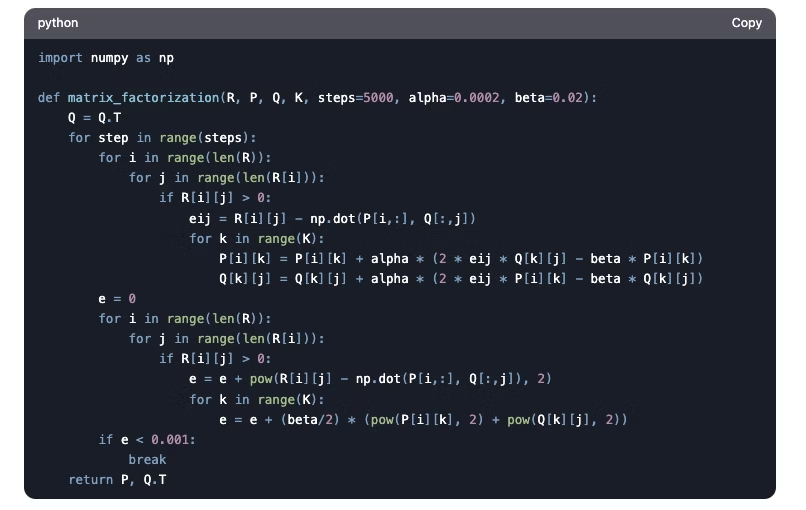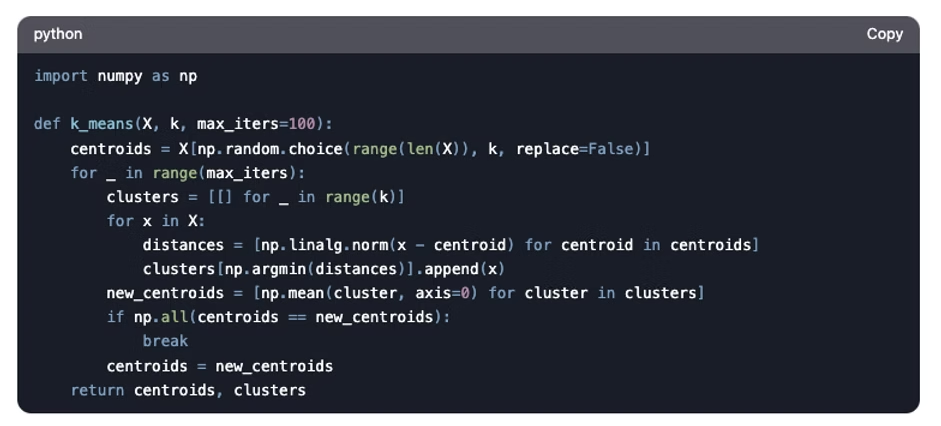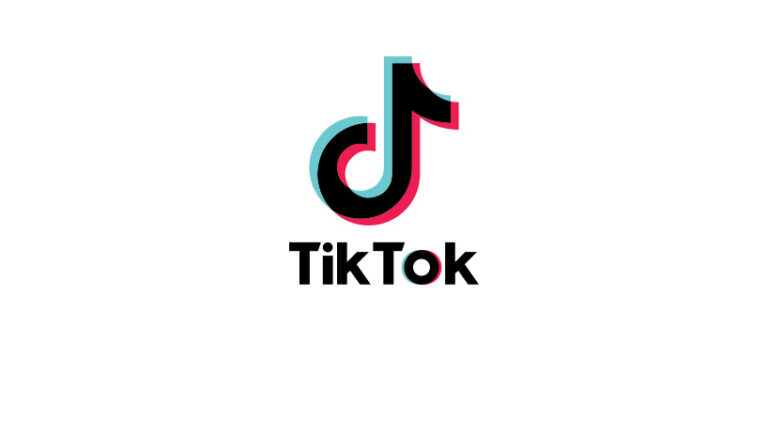1. Introduction
If you’re a software engineer or data scientist dreaming of working at TikTok, you’re not alone.
TikTok has taken the world by storm, and behind its addictive scroll lies a powerhouse of machine learning (ML) innovation.
From its hyper-personalized recommendation system to its cutting-edge
video understanding algorithms, TikTok relies heavily on ML to deliver a seamless user
experience.
But here’s the catch: landing an ML role at TikTok isn’t easy. The competition is fierce, and the interviews are designed to
test not just your technical knowledge but also your ability to solve real-world problems creatively.
Whether you’re applying for an ML engineer, data scientist, or
research scientist role, you’ll need to be prepared for a mix of coding
challenges, ML system design questions, and deep theoretical
discussions.
That’s where this blog comes in. We’ve done the research and compiled a list of the top 25 frequently asked
questions in TikTok ML interviews, complete with detailed answers. Whether you’re a
beginner or an experienced professional, this guide will help you understand what TikTok is looking for
and how to stand out in your interview.
And hey, if you’re serious about acing your ML interviews, don’t forget to register for our free webinar HERE. We specialize in helping software
engineers like you prepare for ML interviews at top companies like TikTok. Let’s get started!
2. Why TikTok’s ML Interviews Are Unique
Before we dive into the questions, let’s talk about what makes TikTok’s ML interviews unique. Unlike traditional tech
companies, TikTok’s entire product revolves around ML. From the “For You” page to
content moderation and ad targeting, ML is at the heart of everything
TikTok does. This means the company is looking for candidates who not only understand ML theory but can
also apply it to solve real-world problems at scale.
What TikTok Looks For in Candidates
Strong Fundamentals: TikTok expects you to have a solid grasp of ML concepts like
supervised and unsupervised learning, neural networks, and
optimization algorithms.
Practical Problem-Solving: You’ll need to demonstrate how you’d design and implement ML
systems, especially recommendation systems, which are critical to TikTok’s
success.
Coding Skills: While ML theory is important, TikTok also tests your ability to write
clean, efficient code. Expect questions on algorithms, data
structures, and ML-specific coding challenges.
Creativity and Innovation: TikTok values candidates who can think
outside the box and come up with innovative solutions to complex problems.
The Interview Structure
TikTok’s ML interview process typically consists of the following rounds:
Technical Screening: A coding challenge or a phone screen focusing on ML fundamentals.
Onsite Interviews:
Coding Rounds: Algorithmic problems with an ML twist.
ML System Design: Designing scalable ML systems, such as recommendation engines or video classification pipelines.
Theoretical Questions: Deep dives into ML concepts, math, and statistics.
Behavioral Interviews: Assessing cultural fit and problem-solving approach.
Now that you know what to expect, let’s jump into the top 25 questions TikTok asks in its ML
interviews.
3. Top 25 Frequently Asked Questions in TikTok ML Interviews
To make this section easy to navigate, we’ve divided the questions into 5 categories:
Foundational ML Concepts
Deep Learning and Neural Networks
Recommendation Systems
ML System Design
Coding and Algorithmic Challenges
Let’s tackle each category one by one.
Category 1:
Foundational ML Concepts
Question 1: What is the bias-variance tradeoff, and why is it important?
Answer:The bias-variance tradeoff is a fundamental
concept in ML that deals with the balance between underfitting and
overfitting. Here’s a breakdown:
Bias refers to errors due to overly simplistic assumptions in the
learning algorithm. High bias can cause underfitting, where the model fails to
capture the underlying patterns in the data.
Variance refers to errors due to the model’s sensitivity to small
fluctuations in the training set. High variance can cause overfitting, where
the model captures noise instead of the underlying pattern.
Why is it important?
A model with high bias performs poorly on both training and test data.
A model with high variance performs well on training data but poorly on test data.
The goal is to find the sweet spot where both bias and variance are minimized, leading to good generalization
on unseen data.
Example:Imagine you’re building a model to predict user engagement on
TikTok videos. A high-bias model might oversimplify the problem (e.g., using only video length as a
feature), while a high-variance model might overcomplicate it (e.g., fitting noise like random user
interactions). The right balance ensures your model generalizes well to new videos.
Question 2: Explain the difference between supervised and unsupervised learning.
Answer:
Supervised Learning: The model is trained on labeled data, where
the input features are paired with the correct output. The goal is to learn a mapping from
inputs to outputs. Examples include regression (predicting continuous values)
and classification (predicting discrete labels).
Example: Predicting whether a TikTok video will go viral based on
features like likes, shares, and watch time.
Unsupervised Learning: The model is trained on unlabeled data,
and the goal is to find hidden patterns or structures in the data. Examples include
clustering (grouping similar data points) and dimensionality
reduction (reducing the number of features).
Example: Grouping TikTok users into clusters based on their
viewing behavior to personalize recommendations.
Why TikTok Cares:TikTok uses both supervised and unsupervised learning in its ML systems. For
instance, supervised learning powers its content recommendation engine, while unsupervised learning
helps identify user segments for targeted advertising.
Question 3: What is regularization, and how does it prevent overfitting?
Answer:Regularization is a technique used to prevent overfitting by
adding a penalty term to the model’s loss function. The two most common types are:
L1 Regularization (Lasso): Adds the absolute value of the coefficients as a penalty
term. This can shrink some coefficients to zero, effectively performing feature
selection.
L2 Regularization (Ridge): Adds the squared value of the coefficients as a penalty
term. This shrinks all coefficients but doesn’t set them to zero.
How it prevents overfitting:
By penalizing large coefficients, regularization discourages the model from fitting noise in the training
data.
It encourages simpler models that generalize better to unseen data.
Example:In a TikTok recommendation system, regularization can help
prevent the model from overfitting to noisy user interactions (e.g., accidental clicks) and focus on
meaningful patterns.
Question 4: What is cross-validation, and why is it important?
Answer:Cross-validation is a technique used to evaluate the performance
of an ML model by splitting the data into multiple subsets. The most common method is k-fold
cross-validation, where the data is divided into k subsets, and the model is trained and
validated k times, each time using a different subset as the validation set and the remaining data as
the training set.
Why it’s important:
It provides a more reliable estimate of the model’s performance compared to a single train-test split.
It helps detect overfitting by ensuring the model performs well on multiple subsets of the data.
Example:When building a model to predict TikTok video engagement,
cross-validation ensures that the model’s performance is consistent across different user segments and
not just a fluke of one particular dataset.
Question 5: How do you handle missing data in a dataset?
Answer:Handling missing data is crucial because most ML algorithms don’t
work well with incomplete datasets. Here are some common strategies:
Remove Missing Data: If the missing values are few, you can drop the rows or columns with
missing data.
Imputation: Replace missing values with a statistic like the
mean, median, or mode. For more advanced imputation, you can use ML models to predict missing
values.
Use Algorithms That Handle Missing Data: Some algorithms, like XGBoost, can handle
missing values natively.
Example:In a TikTok dataset, if some users haven’t provided their age,
you might impute the missing values with the median age of the user base or use a model to predict age
based on other features.
Category 2:
Deep Learning and Neural Networks
Question 6: What is a neural network, and how does it work?
Answer:A neural network is a computational model
inspired by the human brain. It consists of layers of interconnected nodes (neurons) that process input
data and learn to make predictions. Here’s how it works:
Input Layer: Receives the input features.
Hidden Layers: Perform transformations on the input data using weights and activation
functions.
Output Layer: Produces the final prediction.
Key Concepts:
Weights: Parameters that the model learns during training.
Activation Functions: Introduce non-linearity into the model
(e.g., ReLU, sigmoid).
Backpropagation: The process of updating weights by minimizing
the loss function using gradient descent.
Example:TikTok uses neural networks for tasks like video classification
(e.g., identifying the content of a video) and natural language processing (e.g., analyzing video
captions).
Question 7: What is the difference between CNN and RNN?
Answer:
CNN (Convolutional Neural Network): Designed for grid-like data (e.g., images). It uses
convolutional layers to extract spatial features and pooling layers to reduce
dimensionality.
Example: TikTok uses CNNs for video frame analysis to detect
objects, scenes, and activities.
RNN (Recurrent Neural Network): Designed for sequential data (e.g., time series, text).
It uses recurrent layers to capture temporal dependencies.
Example: TikTok uses RNNs for tasks like predicting the next
video in a user’s watch sequence.
Why TikTok
Cares:TikTok’s recommendation system relies on both CNNs (for video content analysis) and
RNNs (for modeling user behavior over time).
Question 8: What is overfitting in deep learning, and how do you prevent it?
Answer:Overfitting occurs when a model learns the training data too well,
including noise and outliers, and performs poorly on unseen data. Here’s how to prevent it:
Regularization: Add penalty terms to the loss function (e.g., L1, L2).
Dropout: Randomly deactivate neurons during training to prevent
co-adaptation.
Early Stopping: Stop training when validation performance stops improving.
Data Augmentation: Increase the size of the training data by applying transformations
(e.g., flipping images).
Example:In a TikTok video classification model, overfitting might occur
if the model memorizes specific video features instead of learning general patterns. Techniques like
dropout and data augmentation can help.
Question 9: What is transfer learning, and how is it used in practice?
Answer:Transfer learning is a technique where a pre-trained model is
fine-tuned for a new task. Instead of training a model from scratch, you leverage the knowledge learned
from a large dataset (e.g., ImageNet) and adapt it to your specific problem.
Why it’s useful:
It saves time and computational resources.
It’s especially useful when you have limited labeled data.
Example:TikTok might use a pre-trained CNN (e.g., ResNet) for video
classification and fine-tune it on its own dataset to improve performance.
Question 10: What is gradient descent, and how does it work?
Answer:Gradient descent is an optimization algorithm used to minimize the
loss function in ML models. Here’s how it works:
Initialize Weights: Start with random values for the model’s
parameters.
Compute Gradient: Calculate the gradient of the loss function with respect to the
weights.
Update Weights: Adjust the weights in the opposite direction of the gradient to reduce the
loss.
Repeat: Iterate until the loss converges to a minimum.
Example:In a TikTok recommendation model, gradient descent is used to
optimize the weights of the neural network to minimize prediction errors.
Category 3:
Recommendation Systems
Question 11: How does TikTok’s recommendation system work?
Answer:TikTok’s recommendation system is one of the most advanced in the
world, powering the “For You” page. Here’s a high-level overview:
Data Collection: TikTok collects data on user interactions (e.g., likes, shares, watch
time) and video features (e.g., content, hashtags).
Candidate Generation: A model generates a pool of potential videos to recommend based on user
preferences.
Ranking: Another model ranks the candidates based on their
predicted engagement (e.g., likelihood of a like or share).
Diversity and Exploration: The system ensures diversity in recommendations and explores new
content to avoid filter bubbles.
Why TikTok Cares:Understanding recommendation systems is crucial for ML roles at TikTok, as it’s the
core of their product.
Question 12: What are collaborative filtering and content-based filtering?
Answer:
Collaborative Filtering: Recommends items based on user-item
interactions. It assumes that users who agreed in the past will agree in the future.
Example: If User A and User B both liked Video X, TikTok might
recommend Video Y (liked by User B) to User A.
Content-Based Filtering: Recommends items based on their
features. It assumes that users will like items similar to those they’ve liked before.
Example: If a user likes dance videos, TikTok might recommend
other dance videos.
Why TikTok Uses Both:TikTok combines both approaches to provide personalized and diverse
recommendations.
Question 13: What is the cold start problem, and how do you solve it?
Answer:The cold start problem occurs when a
recommendation system struggles to make accurate recommendations for new users or items due to a lack of
data.
Solutions:
For New Users: Use demographic information or ask for preferences during onboarding.
For New Items: Use content-based features (e.g., video tags, captions) to make initial
recommendations.
Example:When a new user joins TikTok, the system might recommend popular
videos or ask them to select interests to kickstart personalization.
Question 14: How do you evaluate the performance of a recommendation system?
Answer:Common evaluation metrics include:
Precision and Recall: Measure the relevance of recommendations.
Mean Average Precision (MAP): Combines precision and recall into a single metric.
NDCG (Normalized Discounted Cumulative Gain): Measures the ranking quality of
recommendations.
A/B Testing: Compare the performance of different recommendation algorithms in
production.
Example:TikTok might use A/B testing to compare the engagement rates of
two different recommendation models.
Question 15: What is matrix factorization, and how is it used in recommendation systems?
Answer:Matrix factorization is a technique used to decompose a user-item interaction matrix into
lower-dimensional matrices representing latent factors. These latent factors capture underlying patterns
in user preferences and item characteristics.
Why it’s useful:
It reduces the dimensionality of the data.
It helps uncover hidden relationships between users and items.
Example:TikTok might use matrix factorization to identify latent factors
like “preference for dance videos” or “interest in cooking content.”
Category 4:
ML System Design
Question 16: How would you design a recommendation system for TikTok?
Answer:Designing a recommendation system for TikTok involves several
steps:
Data Collection: Gather data on user interactions (e.g., likes, shares) and video
features (e.g., content, hashtags).
Candidate Generation: Use collaborative filtering or content-based filtering to generate a
pool of potential recommendations.
Ranking: Train a model to rank candidates based on predicted
engagement (e.g., likelihood of a like or share).
Diversity and Exploration: Ensure recommendations are diverse and include new content to
avoid filter bubbles.
Evaluation: Use metrics like precision, recall, and A/B testing
to evaluate performance.
Example:A TikTok recommendation system might use a combination of matrix
factorization for candidate generation and a neural network for ranking.
Question 17: How would you handle scalability in an ML system?
Answer:Scalability is crucial for ML systems at TikTok, given its massive
user base. Here’s how to handle it:
Distributed Computing: Use frameworks like Apache Spark or
TensorFlow Distributed to parallelize computations.
Model Optimization: Use techniques like quantization and pruning to reduce model size and
inference time.
Caching: Cache frequently accessed data to reduce latency.
Load Balancing: Distribute requests evenly across servers to prevent bottlenecks.
Example:TikTok’s recommendation system might use distributed training to
handle billions of user interactions daily.
Question 18: How would you design a system to detect inappropriate content on TikTok?
Answer:Designing a content moderation system involves:
Data Collection: Gather labeled data on inappropriate content (e.g., hate speech,
nudity).
Model Training: Train a deep learning model (e.g., CNN for images, RNN for text) to
classify content.
Real-Time Inference: Deploy the model to analyze uploaded content in real-time.
Human Review: Flag suspicious content for human moderators to review.
Feedback Loop: Continuously update the model based on moderator feedback.
Example:TikTok might use a combination of CNNs for image analysis and
RNNs for text analysis to detect inappropriate content.
Question 19: How would you design a system to predict video virality?
Answer:Predicting video virality involves:
Feature Engineering: Extract features like video length, hashtags, and user engagement
history.
Model Training: Train a model (e.g., gradient boosting or neural network) to predict
virality based on historical data.
Real-Time Prediction: Deploy the model to predict virality for new videos.
Evaluation: Use metrics like AUC-ROC to evaluate model
performance.
Example:TikTok might use a gradient boosting model to predict the
likelihood of a video going viral based on early engagement metrics.
Question 20: How would you design a system to personalize ads on TikTok?
Answer:Personalizing ads involves:
User Segmentation: Group users based on demographics, interests, and behavior.
Ad Targeting: Match ads to user segments using collaborative filtering or
content-based filtering.
Real-Time Bidding: Use an auction system to serve the most relevant ads in real-time.
Evaluation: Measure ad performance using metrics like
click-through rate (CTR) and conversion rate.
Example:TikTok might use a combination of matrix factorization and neural
networks to personalize ads for its users.
Category 5:
Coding and Algorithmic Challenges
Question 21: Write a Python function to calculate the cosine similarity between two vectors.
Answer:

Explanation:Cosine similarity measures the cosine of the angle between
two vectors, indicating how similar they are. It’s commonly used in recommendation systems to compare
user or item vectors.
Question 22: Implement a function to perform matrix factorization using gradient descent.
Answer:

Explanation:Matrix factorization decomposes a user-item interaction
matrix into two lower-dimensional matrices representing latent factors. This function uses gradient
descent to optimize the factorization.
Question 23: Write a function to implement k-means clustering.
Answer:

Explanation:K-means clustering groups data points into k clusters based
on their similarity. It’s commonly used in unsupervised learning tasks like user segmentation.
Question 24: Implement a function to calculate the precision and recall of a classification
model.
Answer:

Explanation:Precision measures the accuracy of positive predictions,
while recall measures the proportion of actual positives correctly identified. Both are important
metrics for evaluating classification models.
Question 25: Write a function to perform gradient descent for linear regression.
Answer:

Explanation:Gradient descent is used to optimize the parameters of a
linear regression model by minimizing the loss function.
4. Tips to Ace TikTok ML Interviews
Master the Basics: Ensure you have a strong understanding of ML fundamentals, including
supervised and unsupervised learning, regularization, and evaluation metrics.
Practice Coding: Be comfortable with Python and common ML libraries like NumPy, Pandas, and
Scikit-learn.
Understand Recommendation Systems: TikTok’s core product relies
on recommendation algorithms, so be prepared to discuss collaborative filtering, content-based
filtering, and matrix factorization.
Prepare for System Design: Practice designing scalable ML systems, especially
recommendation engines and content moderation systems.
Showcase Creativity: TikTok values innovative thinking, so be ready to propose creative
solutions to complex problems.
5. How InterviewNode Can Help You Prepare
At InterviewNode, we specialize in helping software engineers like you prepare for ML interviews at top companies like
TikTok. Our resources include:
Mock Interviews: Practice with experienced ML engineers who’ve aced TikTok
interviews.
Curated Question Banks: Access a library of real interview questions and detailed
solutions.
ML System Design Courses: Learn how to design scalable ML systems from scratch.
Personalized Coaching: Get tailored feedback and guidance to
improve your skills.
6. Conclusion
Preparing for TikTok’s ML interviews can be challenging, but with the right resources and practice, you can stand out
from the competition. In this blog, we’ve covered the top 25 frequently asked
questions in TikTok ML interviews, along with detailed answers and practical examples.
Whether you’re brushing up on foundational concepts or diving into advanced topics like recommendation
systems and ML system design, this guide has you covered.
Remember, TikTok is
looking for candidates who not only have strong technical skills but also the creativity and
problem-solving ability to tackle real-world challenges. So, start practicing these questions, explore
InterviewNode’s resources, and get ready to ace your TikTok ML interview!
7. FAQs
Q1: What is the interview process like for ML roles at TikTok?A1: The process typically includes a
technical screening, followed by onsite interviews with coding rounds, ML system design, theoretical
questions, and behavioral interviews.
Q2: How important is coding in TikTok ML interviews?A2: Coding is a critical component, especially
for roles like ML engineer. You’ll be expected to write clean, efficient code and solve algorithmic
problems with an ML focus.
Q3: What resources does InterviewNode offer for ML interview preparation?A3: InterviewNode offers
mock interviews, curated question banks, ML system design courses, and personalized coaching to help you
prepare for ML interviews.
Ready to take your
ML
interview preparation to the next level?Register for my free webinar today and start your journey toward
landing your dream job at TikTok!






